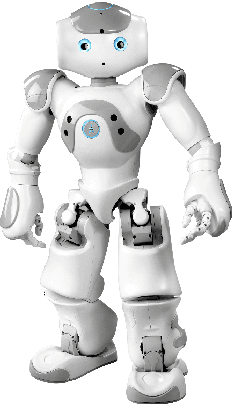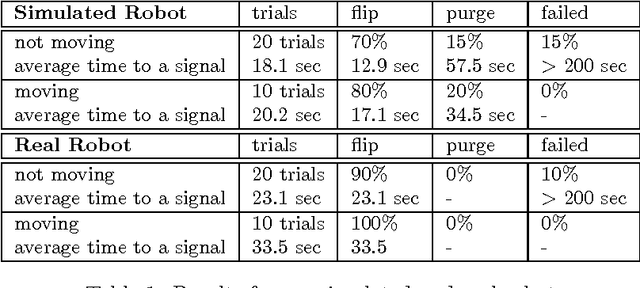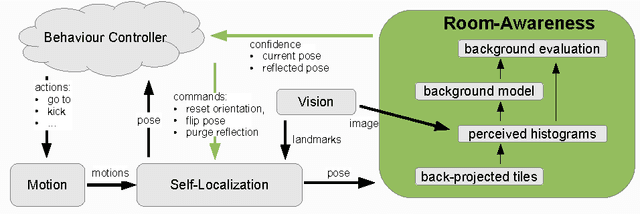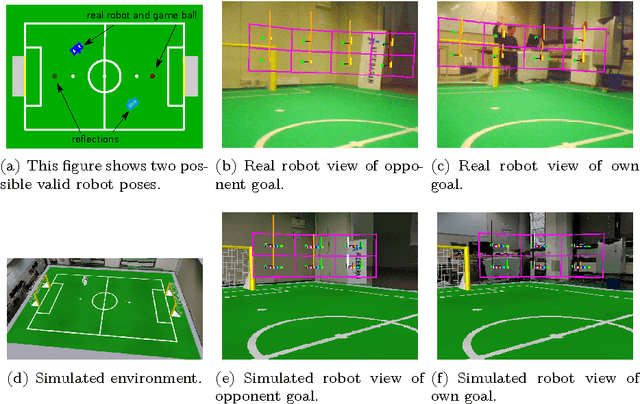Visual Room-Awareness for Humanoid Robot Self-Localization
Paper and Code
Apr 22, 2013



Humanoid robots without internal sensors such as a compass tend to lose their orientation after a fall. Furthermore, re-initialisation is often ambiguous due to symmetric man-made environments. The room-awareness module proposed here is inspired by the results of psychological experiments and improves existing self-localization strategies by mapping and matching the visual background with colour histograms. The matching algorithm uses a particle-filter to generate hypotheses of the viewing directions independent of the self-localization algorithm and generates confidence values for various possible poses. The robot's behaviour controller uses those confidence values to control self-localization algorithm to converge to the most likely pose and prevents the algorithm from getting stuck in local minima. Experiments with a symmetric Standard Platform League RoboCup playing field with a simulated and a real humanoid NAO robot show the significant improvement of the system.
 Add to Chrome
Add to Chrome Add to Firefox
Add to Firefox Add to Edge
Add to Edge